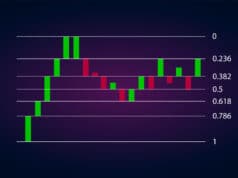A position trader opens a position for an instrument and holds the position for a long period. This period can range from many weeks to years. Apart from “Buy and hold,” position trading is the longest holding period compared to the rest of the trading techniques.
What is position sizing?
Position sizing stands for the number of units that a trader or investor invests in a specific security. An investor must take their account size and risk tolerance into consideration before determining appropriate position sizing. To put it simply, position sizing is the size of a position in a portfolio or amount an individual will be trading. It is used by investors to determine the number of security units they can buy. It helps them to maximize returns and control risk.
Using R multiples for position sizing
Before applying position sizing strategies in trading, you need to understand the principles of R and R multiples. R refers to the risk taken by you on any trade while entering the market. To explain further, R is the point where you decide to get out of your position to protect your capital from losses. This is the point where you realize that this trade is not going to be profitable. Hence, it is better to leave the trade before losing more.
Expectancy is a mathematical formula that lets you know how much you are going to win on average per dollar risked. It takes the profitability of winning or losing and the size of the R multiples into account. In trading, you must have positive expectancy on your side if you want to make money in the long run. Actually, expectancy stands for the average R multiple that is provided by your system per trade.
If you are a position trader, you must study the trade statistics thoroughly during the trade so you can come up with a position sizing strategy for that level. After that, you will be able to decide how much you will risk on each trade. Position sizing is one of the essential lessons you can master to profit from trading.
How to determine forex position sizing?
When it comes to forex trading, your trade size in units, better known as position sizes, is more important than your entry and exit points. This position size is determined by the number of lots, as well as the type and size of lots bought or sold by you in a trade. You can break down your risk into two parts – account risk and trade risk.
Let us now see how you can determine the ideal forex position size.
Set account risk limit per trade
The first step to determine forex position size is setting a percentage or dollar amount limit that would be risked by you on each trade. For example, if you use a 1% limit, you would risk $100 per trade on a $10,000 trading account. Similarly, you can risk $50 per trade if the risk limit is 0.5%. The dollar limit is to be decided by the account size and the maximum percentage decided by you, and this becomes the guideline for your every trade onwards.
Plan for pip risk on a trade
Once you know the maximum account risk for each trade, you can focus on the trade. You can determine the pip risk on trade by the difference between the entry point and stop-loss point. A pip stands for “Price Interest Point” or “Percentage in Point.” It is typically the smallest part of a currency price that changes the pip is 0.0001, or one-hundredth of a percentage for most currency pairs. To plan for pip risk on a trade, figure out how far away the entry point is from the stop-loss.
Calculate pip value for a trade
If the currency pair you are trading has the US dollar as the second currency, called the quote currency, and you used dollars to fund your trading account, pip values for various sizes of lots are fixed. The pip value is $0.10 for a micro lot and $1 for a mini lot. For a standard lot, it is $10. You need to multiply the pip values by the exchange rate for the dollar vs. the quote currency. For example, let’s assume that you are trading the EUR/GBP pair while the USD/GBP pair is trading at $1.2219. So, for a micro lot of EUR/GBP, the pip value would be $0.10 * $1.2219 = $0.12. For a mini lot, the pip value would be $1 * $1.2219 = $1.22, and for a standard lot, it would be $10 * $1.2219 = $12.22. Now, you can calculate the position size.
Determine Position Size
You can calculate the ideal position size using this formula:
Pips at risk*pip value*lots traded=amount of risk
For example, let’s assume that your trading account has $10,000, and you risk 1% of the capital for each trade. Therefore, the maximum amount of risk per trade is $100. The pair in trade is EUR/USD. Now, if you decide to buy at $1.3051 and place the stop-loss at $1.3041, you put ten pips at risk according to the formula $1.3051 – $1.3041 = $0.001. The value of each pip movement is $1 because you are trading in mini lots.
By plugging these numbers in the formula, you get:
10*$1*lots traded=$100
By dividing both sides of the equation by $10, we get:
Lots traded=$100
Now, let’s assume that a trader is trading mini lots of the EUR/GBP while buying at $0.9804 and placing the stop loss at $0.9794 with ten pips at risk. Here, the formula would be:
10 * $1.22 * lots traded = $100
Keep in mind that the $1.22 value comes from the conversion formula mentioned in section three. The number may vary depending on the current exchange rate between the British pound and dollar. By dividing both sides of the equation by $12.20, you get:
Lots traded=8.18
So, for this trade, the position side must be eight mini lots and one micro lot. You can calculate the lot size and position size on forex trades with this formula and the 1% rule.




